In the world of pickup trucks, capability is often measured in horsepower, torque, towing capacity, or off-road prowess. But for many truck owners—especially those who take pride in doing their own repairs, upgrades, and maintenance—another, less obvious metric matters just as much: the strength of the DIY (Do-It-Yourself) support community.
The truth is, even the most capable vehicle can become a frustrating ownership experience if the knowledge base around it is weak. Conversely, a modest truck with a passionate, well-informed community behind it can become a canvas for learning, experimentation, and mechanical growth.
DIY communities form the backbone of truck culture. They empower everyday owners to tackle oil changes, suspension upgrades, electrical fixes, and complex diagnostics without always needing to visit a dealership or professional shop. They offer a platform to share ideas, solutions, mistakes, and victories.
Forums, social media groups, YouTube channels, Reddit threads, and even good old blog posts serve as a digital garage where experience is traded freely and enthusiastically. A strong DIY community can turn an intimidating repair into an afternoon project, and a hesitant owner into a confident mechanic.
Not all trucks are equally supported in this way. Some have amassed cult-like followings where DIY content is organized, well-documented, and frequently updated. Others languish in relative obscurity, with forums that feel like ghost towns and a lack of detailed repair walkthroughs. The reasons for this divide are complex.
Some trucks are built with a modular, easy-to-modify design that encourages hands-on work. Others rely on proprietary systems, luxury-focused internals, or simply failed to sell in large enough numbers to generate a self-sustaining online culture.
Demographics matter too—trucks marketed toward enthusiasts, off-roaders, and tradespeople tend to have more active and mechanically curious owners than those aimed at suburban commuters or luxury buyers.
This article breaks down the top five trucks with the largest, most robust DIY communities—vehicles that are practically internet-famous for their modifiability, mechanical simplicity, and user support.
These trucks benefit from huge online ecosystems where nearly every conceivable issue has been discussed, solved, and posted with photos or videos. Whether you’re looking to lift your suspension, swap out your differential, replace your transfer case, or install a custom sound system, these communities offer the roadmap and support to do it yourself.
On the flip side, we’ll also explore five trucks that suffer from the opposite problem: tiny or non-existent DIY support communities. These vehicles may be reliable or comfortable, but when it comes to fixing them yourself, you’re often left in the dark.
These trucks are plagued not necessarily by poor engineering, but by an absent user base, low online engagement, or a design that discourages DIY work. Owners of these trucks often face incomplete guides, unanswered forum posts, and a sense of being on their own, even for common problems.
In building this list, the focus wasn’t just on how easy a truck is to repair, but on how much community-driven support exists around it. It’s one thing to have a truck that’s theoretically easy to fix—it’s another to have hundreds of tutorials, YouTube videos, or forum threads walking you through every step with photos, diagrams, and shared experience.
That level of guidance can make or break the ownership experience, especially for those who want to take control of their vehicle’s maintenance and customization.
Whether you’re shopping for a new truck, already own one, or are just curious about the state of online truck culture, this breakdown will give you an honest look at which pickups come with a built-in tribe of fellow tinkerers—and which ones will leave you wrenching alone in the wilderness.
Because in today’s connected world, a truck isn’t just about what it can do—it’s about who’s behind the screen when you need help doing it.
Also Read: 5 Trucks With Best Sway-control Towing And 5 That Wander
Trucks with the Largest DIY Support Communities
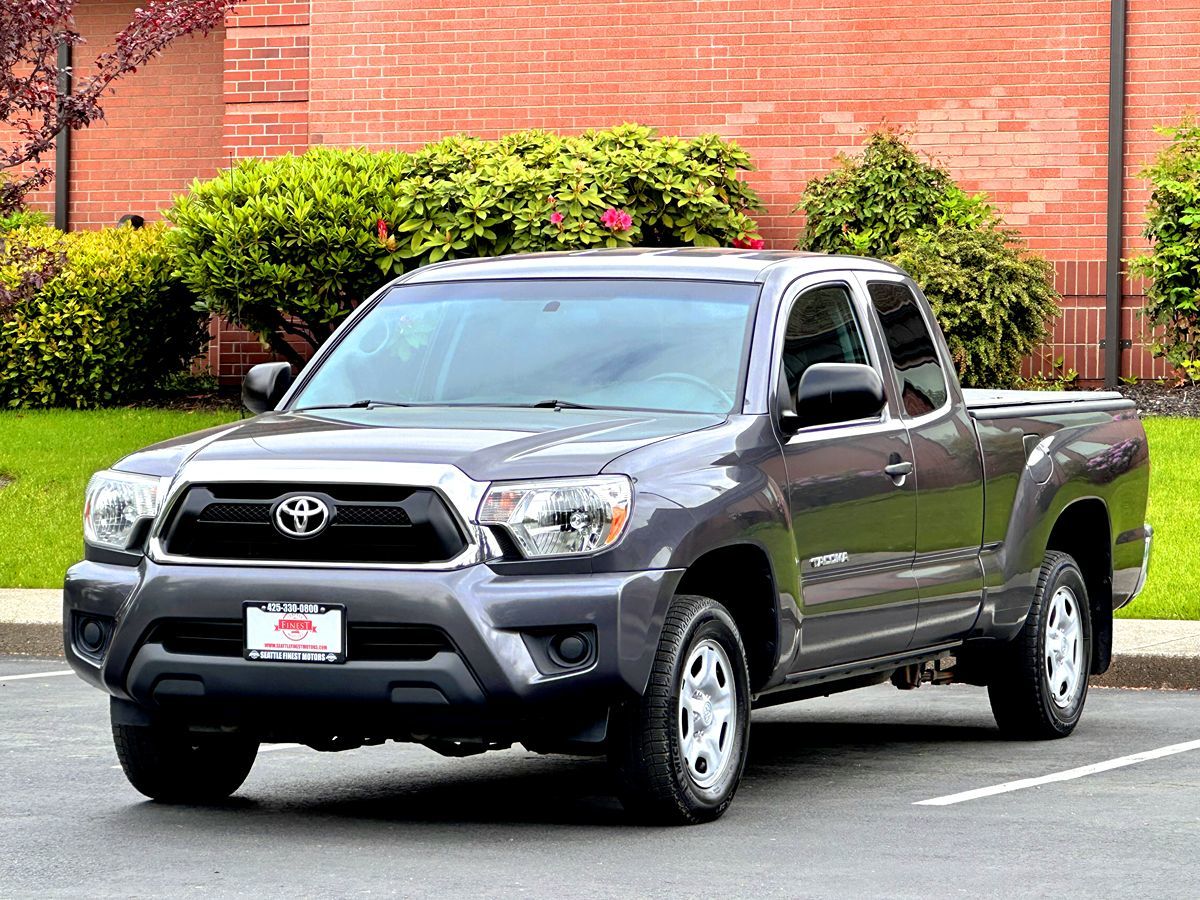
1. Toyota Tacoma
Few trucks can claim the kind of cult-like following that the Toyota Tacoma enjoys. What sets the Tacoma apart isn’t just its reliability or resale value—it’s the sheer scale of its online support network. DIYers flock to it not only because it’s a solid, well-engineered machine, but because it’s backed by an ocean of resources.
Forums like TacomaWorld, Reddit’s r/ToyotaTacoma, and even specific Facebook groups cater to nearly every generation, trim, and use case. Whether you’re daily driving a 1998 SR5 or overlanding in a 2020 TRD Pro, there’s a place for you to ask, learn, and share. It’s more than a forum—it’s a digital garage full of veterans eager to share their scars and wisdom.
The Tacoma’s success in the DIY space also stems from Toyota’s commitment to long production cycles and part consistency. The second generation (2005–2015) and third generation (2016–2023) shared many mechanical systems, allowing knowledge to compound and remain relevant across model years.
This allows community members to post universal guides for tasks like differential oil changes, clutch replacements, or head unit upgrades. It’s not uncommon to see one guide serve hundreds of users across three or four model years. The redundancy in Toyota’s engineering has created a fertile ground for content creators and forum contributors alike.
The Tacoma’s popularity among off-roaders and overlanders has also supercharged the growth of DIY culture around it. Customizations like long-travel suspension kits, snorkels, rock sliders, rooftop tents, and gear storage systems are almost always self-installed.
This has led to an abundance of visual documentation—high-quality YouTube videos, PDF guides, even CAD drawings for fabrication projects. Companies that sell aftermarket parts often collaborate directly with community influencers to ensure their products are easy to install. Even complex projects like solid axle swaps or full re-gearing jobs are covered in detail online, often with real-time community feedback.
A final piece of the puzzle is the community tone. The Tacoma DIY world is notably inclusive, supportive, and education-focused. New members are welcomed, not ridiculed, for asking basic questions. Experienced users often update old threads, post new product reviews, and revisit topics with fresh eyes.
It’s this level of active maintenance—of the community, not just the trucks—that keeps the Tacoma at the top of the DIY support hierarchy. Whether you’re swapping U-joints or retrofitting a backup camera, someone’s not only done it—they’ve documented it for you in excruciating, glorious detail.

2. Ford F-150
When it comes to scale, the Ford F-150 is an absolute titan. As the best-selling truck in America for over four decades, the F-150 has generated a staggering amount of user-generated content. Its presence in DIY circles is unmatched in volume, diversity, and depth.
The Ford Truck Enthusiasts forum alone boasts millions of posts, with subforums broken down by generation, engine type, drivetrain, and even geographic region. Whether you’re working on a classic 1987 5.8L V8 or troubleshooting the latest 2023 EcoBoost, odds are someone has already asked your question—and someone else has answered it with diagrams, part numbers, and personal experience.
Part of what makes the F-150 so uniquely rich in DIY support is its evolutionary nature. The platform has adapted over the years—from carbureted V8s to turbocharged V6s, from body-on-frame to aluminum construction—yet many mechanical principles and service approaches have carried over.
DIYers often share multi-generational guides, noting differences where necessary but keeping the core instructions consistent. This layered documentation builds a kind of historical archive, making the F-150 forum scene feel more like an open-source encyclopedia than a casual message board.
Another reason the F-150 dominates in DIY circles is its modular design and near-universal part availability. The massive range of trims and packages—XL, XLT, Lariat, King Ranch, Raptor—might seem daunting, but many parts are interchangeable. That interchangeability has encouraged experimentation and mechanical creativity.
F-150 owners frequently share retrofit projects, such as adding modern infotainment systems to older models, installing backup cameras, or upgrading to LED lighting. And because so many people have tried (and failed and tried again), there are dozens of troubleshooting branches for nearly every project.
Lastly, the diversity of the F-150 community itself plays a big role. You’ll find professional mechanics, rural farmers, urban DIYers, and teenage first-time truck owners all contributing. That democratization means information is presented in different formats—from step-by-step guides to wrench-in-hand YouTube tutorials to TikTok clips.
The culture encourages problem-solving with all levels of technical fluency in mind. If you’re looking for a truck with the widest possible pool of real-world mechanical knowledge behind it, the F-150 isn’t just a contender—it’s the benchmark.
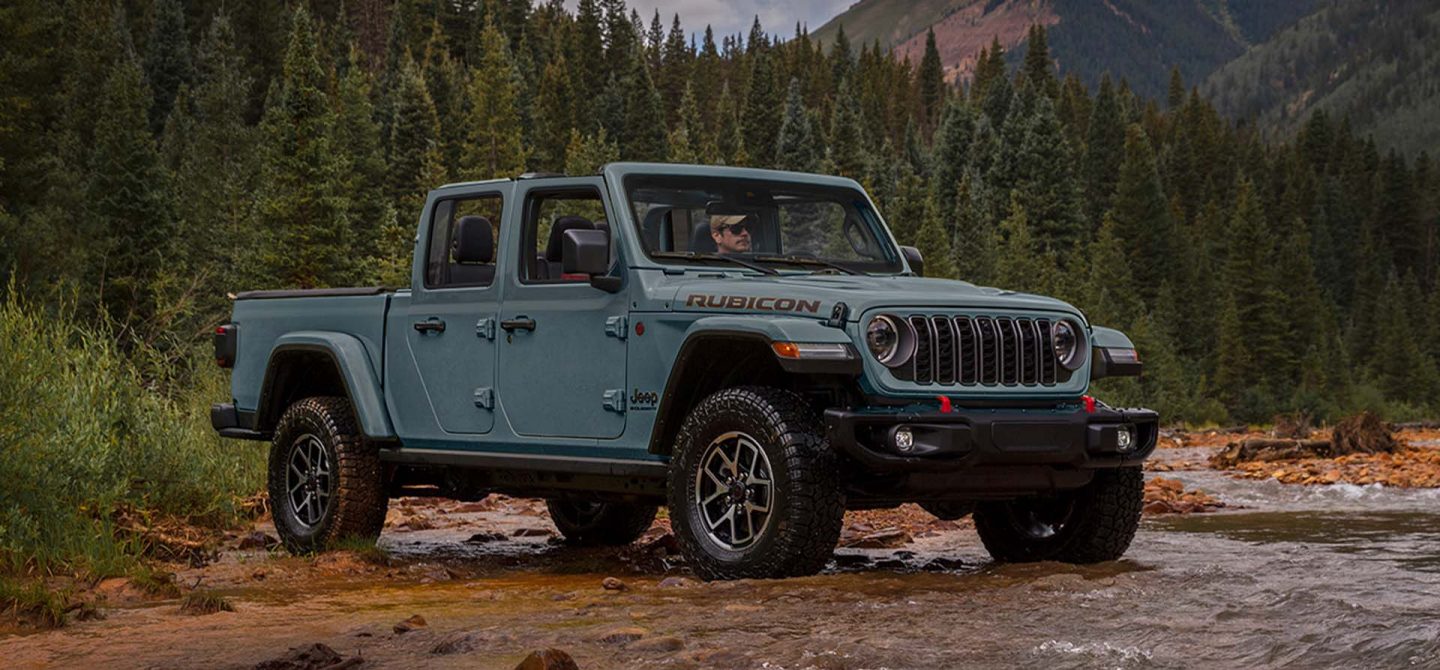
3. Jeep Gladiator
While the Jeep Gladiator is relatively new, debuting in 2020, it has already carved out a massive DIY footprint thanks to the heritage and horsepower of the broader Jeep community.
Sharing its bones with the Wrangler JL means the Gladiator inherited more than just a chassis—it inherited decades of passionate, mechanically inclined owners willing to document every bolt, nut, and wiring harness. Despite its novelty as a midsize truck, the Gladiator arrived to an already-prepared enthusiast infrastructure. Its community came pre-assembled.
Gladiator forums, such as JeepGladiatorForum.com and JLWranglerForums, function more like high-efficiency knowledge engines than typical message boards. Every aspect of the Gladiator—suspension, electronics, drivetrain, interior tech—is broken into granular categories, often moderated by experienced contributors who compile FAQs and step-by-step repair guides.
Owners don’t just post pictures of their mods; they post torque specs, wire colors, tool lists, and video walkthroughs. There’s a shared understanding that any mod or fix might become the next guide for a fellow Jeeper in need.
The off-road and overlanding culture around the Gladiator has also exploded, with thousands of owners building trail-ready rigs in their driveways. This has created a flood of DIY content focused on real-world applications. Need to rewire your auxiliary switches?
Want to install an ARB dual air compressor under the seat? Curious about regearing for 37s? The guides are there—often with multiple variations depending on your mechanical confidence and available tools. Many forum members test different parts, run them in extreme conditions, and return with follow-up reports that are incredibly useful for buyers and builders alike.
Jeep owners are known for their openness to modification and tinkering, and the Gladiator is no exception. What’s particularly impressive about the Gladiator community is its blend of old-school mechanical know-how and modern tech integration. You’ll find users discussing software updates for the infotainment system in one thread and coilover tuning in the next.
This makes it a paradise for DIYers who want to grow their skills across both analog and digital domains. If you’re looking for a truck that’s fully supported by an obsessively detailed and interactive user base, the Gladiator is your calling card.
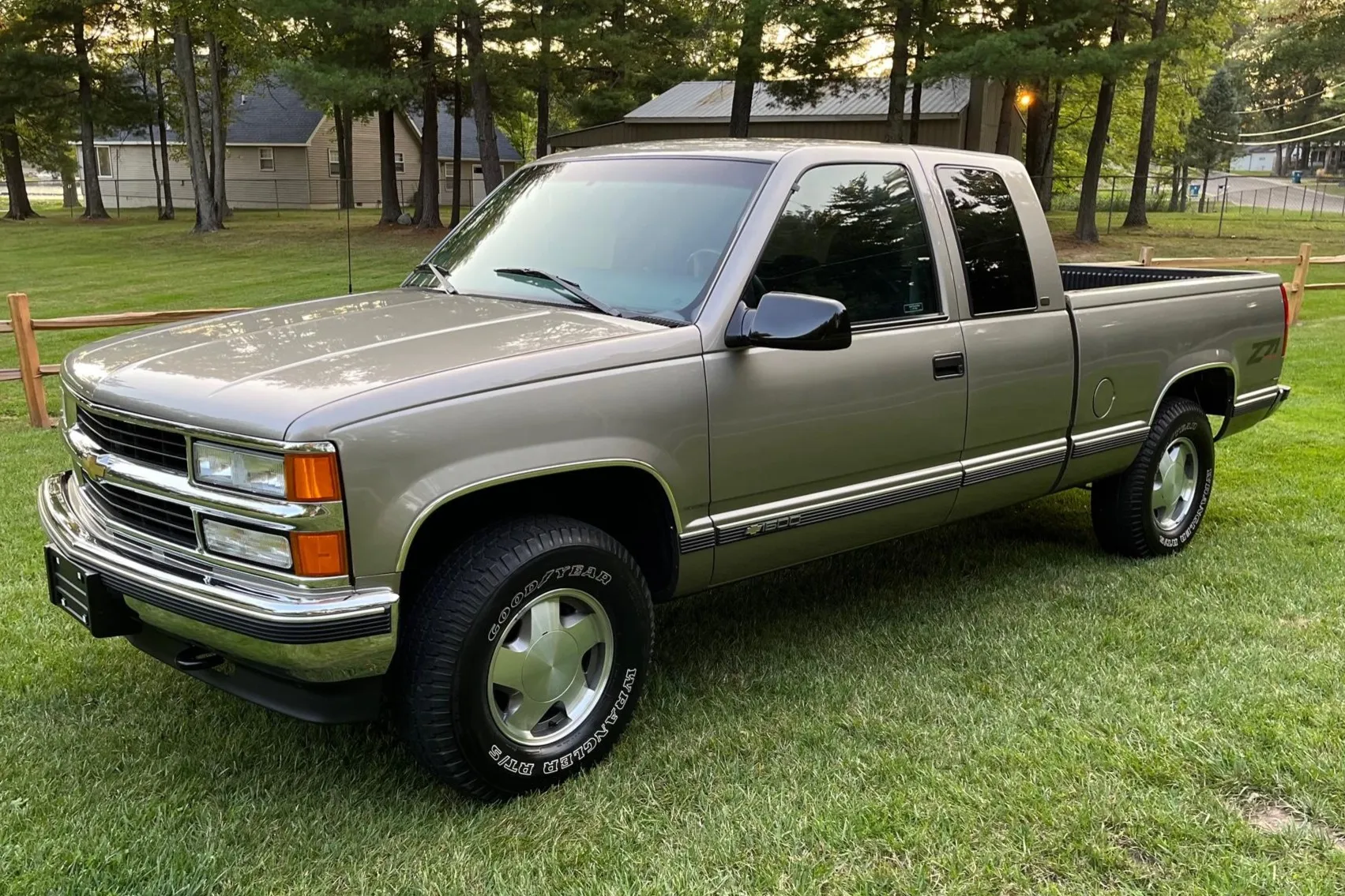
4. Chevrolet Silverado
The Silverado is Chevrolet’s bread-and-butter full-size truck, and with that comes a rock-solid DIY community that stretches across generations, engine types, and use cases. From the late ’90s GMT800 models to the present-day 1500 and 2500 HD lines, Silverado owners have consistently taken maintenance into their own hands.
This ethos is reflected in robust forums like GM-Trucks.com, fullsizechevy.com, and countless YouTube channels dedicated to everything from small repairs to full engine swaps. Silverado DIY culture is blue-collar, no-nonsense, and deeply embedded in practical knowledge.
Much of this DIY strength originates from the legendary LS-series engines that power many Silverado models. The LS family is widely known in hot-rodding and performance circles, meaning Silverado owners benefit from an absurd amount of shared knowledge.
You’ll find drag racers, tow rig owners, and suburban dads all dealing with the same oil leaks, sensor failures, and ignition coil problems—and fixing them with parts sourced from the same catalogs. The crossover between enthusiast and practical communities creates a rich technical overlap that serves every type of owner.
Silverado DIY content is especially strong in maintenance and performance tuning. Whether it’s step-by-step guides for changing out spark plugs on a 5.3L V8 or reprogramming the transmission with HP Tuners, Silverado forums and YouTube channels are packed with precision-level detail.
Many guides are bundled with photos, common mistakes, and even links to verified parts. For common issues like evap leaks or suspension clunks, it’s not uncommon to find diagnosis flowcharts contributed by the community that outperform official dealer docs.
The community has also embraced modernization. Newer Silverados, with their complex infotainment systems and active fuel management (AFM), have given rise to software-savvy owners producing content on disabling cylinder deactivation, retrofitting CarPlay, or upgrading gauge clusters.
This duality—old-school mechanical muscle alongside modern tech wizardry—makes the Silverado’s DIY community one of the most complete in the industry. Whether you’re in a two-car garage or a pro-level shop, there’s a Silverado fix or upgrade guide tailored to your setup.

5. Nissan Frontier
The Nissan Frontier is often seen as the underdog of the midsize truck world, but in the DIY arena, it shines far brighter than many expect. The second-generation Frontier (2005–2021) remained virtually unchanged for 16 years—an eternity in automotive terms—and that stability fostered a loyal, mechanically inclined user base.
Forums like thenewx.org and clubfrontier.org have quietly become goldmines of long-term ownership knowledge, populated by die-hard owners who document their experiences with surgical precision.
One reason for the Frontier’s strong DIY culture is its incredible mechanical simplicity. While competitors evolved with turbocharging, complex electronics, and multilink suspensions, the Frontier stuck to its guns—naturally aspirated V6s, straightforward solid axles, and minimal driver aids. That made it not only durable but extremely accessible to the DIY crowd. Anyone with a basic set of tools and a jack can do a surprising amount of work on a Frontier, and the online community is quick to guide you through it.
The tone of the community also deserves mention. Frontier forums are built around a vibe of mutual respect and practicality. Many threads start with posts like “I’ve never done this before, but here’s what I tried,” and end with a working solution and follow-up images.
There’s less bravado than you find in some enthusiast circles, and more genuine collaboration. Even rare or esoteric problems—like heater blend door issues or power window glitches—are often met with deep-dive responses that include electrical diagrams or repair hacks that work in the real world.
Finally, the Frontier’s overlap with off-roading and adventure culture has expanded its DIY reach. While it lacks the aftermarket diversity of a Tacoma or Gladiator, Frontier owners often fabricate their own armor, modify suspension components, and post blueprints for others to replicate.
If you like wrenching, and especially if you value function over flash, the Frontier DIY world will feel like a comfortable, resource-rich shop you can access from your phone. It may not be the biggest community, but it’s one of the most focused and consistent.
Trucks with Tiny DIY Communities
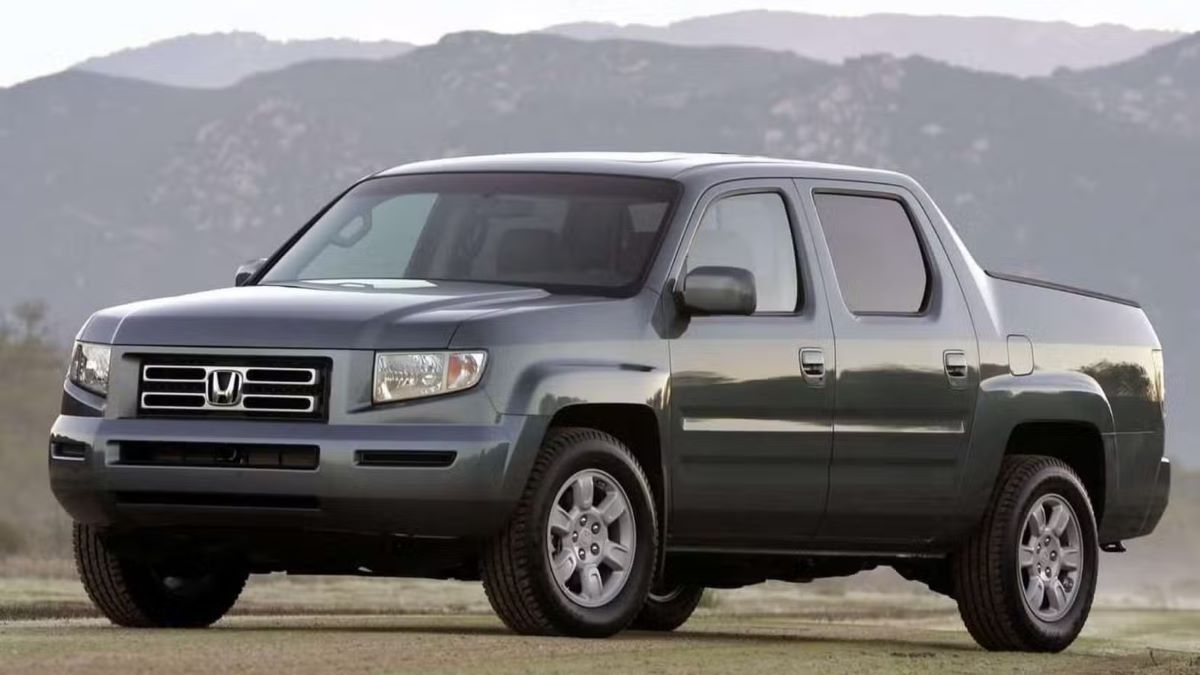
6. Honda Ridgeline
The Honda Ridgeline is an intriguing truck, built for a very specific kind of buyer: someone who needs light-duty hauling, wants Honda reliability, but has no desire to lift the truck, crawl through trails, or tinker under the hood every weekend.
As a result, the Ridgeline community reflects that attitude—practical, quiet, and largely hands-off. DIY support exists, but it’s minimal, and the overall ecosystem for self-guided maintenance or modifications is thin. Many Ridgeline owners view it as a tool, not a platform for expression or experimentation.
Mechanically, the Ridgeline differs from traditional trucks in ways that alienate the typical DIY base. Built on a unibody platform borrowed from the Honda Pilot, it lacks the body-on-frame ruggedness that encourages modular repairs and upgrades.
The drivetrain is transverse-mounted, the suspension is independent front and rear, and it uses a torque-vectoring AWD system that behaves more like a crossover than a 4WD truck. These factors make it much more complex to work on without specialized knowledge or tools—and the typical YouTube mechanic isn’t lining up to dissect the system for the average owner.
Another reason for the Ridgeline’s ghost town DIY scene is the relatively low rate of modifications. Unlike Tacomas or Silverados, you won’t see people re-gearing axles, fabricating bumpers, or tuning ECUs for performance gains.
The few mods that do circulate—like leveling kits, mild tire upsizing, or LED lighting swaps—are well-trodden and offer limited opportunity for community-driven discovery. Even popular accessory installs like tonneau covers or roof racks don’t generate new guides because they’re generally plug-and-play and handled by retailers, not hobbyists.
The community tone is also noticeably different. In Ridgeline forums like RidgelineOwnersClub, most posts revolve around routine maintenance, dealership experiences, and infotainment quirks. When someone does post a DIY tutorial, it’s often met with appreciation—but rarely with follow-up questions, alternative techniques, or expanded discussion.
That stagnancy gives the impression that few owners are engaging deeply with the mechanical side of the truck. For someone who values community learning and active technical problem-solving, the Ridgeline can feel like a dead end.
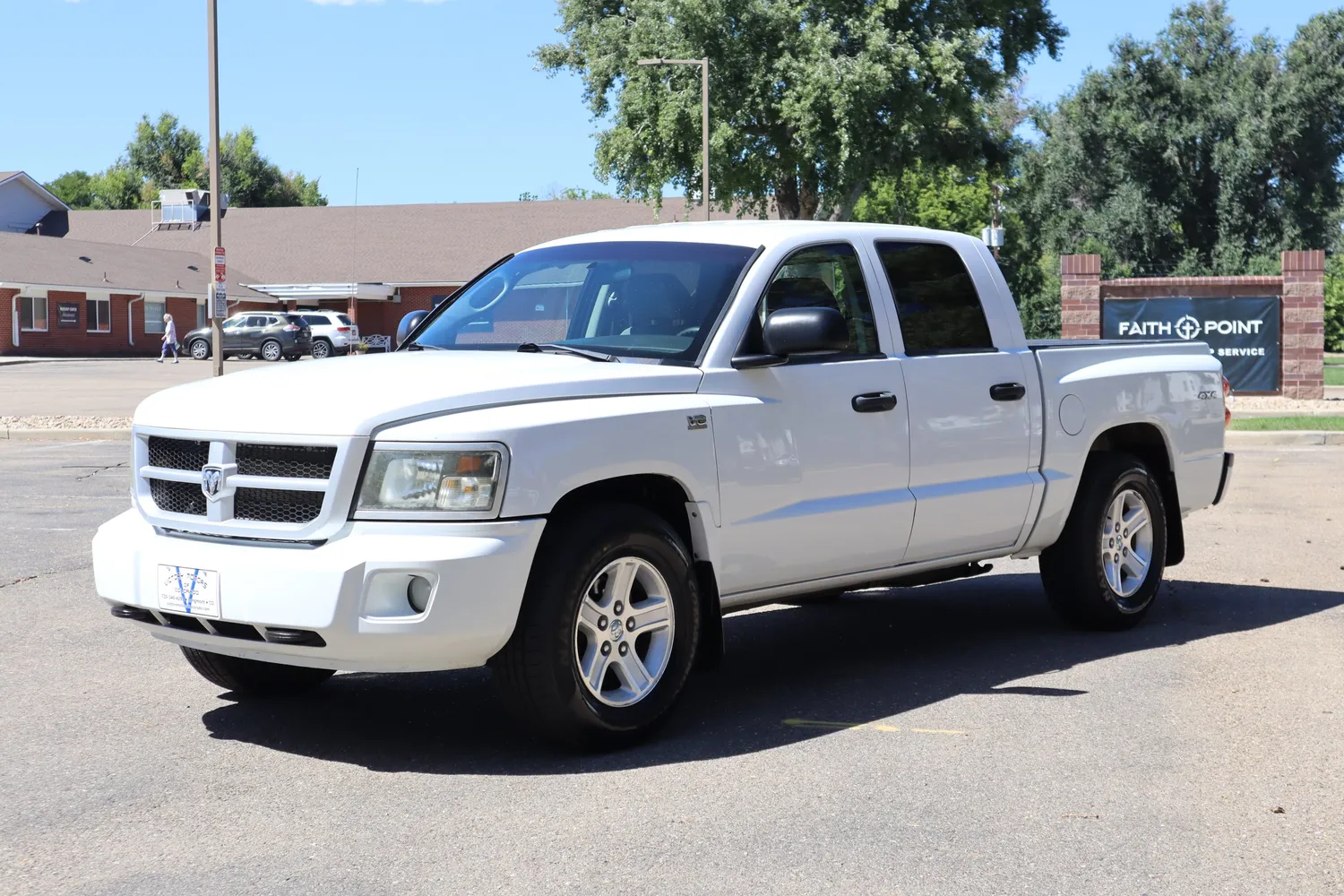
7. Ram Dakota (Post-2000 Models)
The Dodge/Ram Dakota has always lived in a strange middle ground between compact and full-size trucks. In its earlier years, especially during the late 1990s, the Dakota had a strong base of enthusiasts who saw it as a sporty alternative to both S-10s and Rangers.
However, post-2000—especially into the third generation (2005–2011)—the Dakota’s DIY scene lost steam and has never recovered. Today, it ranks as one of the least supported trucks when it comes to user-driven technical content, especially compared to its older siblings in the Ram and Jeep world.
The decline of the Dakota DIY community coincides with a number of strategic missteps by Dodge. The third-gen Dakota gained size and weight but failed to carve out a clear identity. It wasn’t as capable as a full-size Ram, nor as efficient or affordable as a true midsize truck.
This identity crisis is reflected in the community—it lacks the purpose-driven momentum you see in Tacoma or F-150 circles. Instead of a growing pool of knowledge and shared experience, Dakota forums feel abandoned, with outdated threads, broken image links, and DIYs that lack depth or completeness.
Adding to the problem is Dodge’s spotty reliability during those years. Many Dakota owners report issues with the front suspension, electrical systems, and even drivetrain components like the 4.7L V8, which had known problems with sludge buildup and valve train wear.
However, even with these recurring problems, detailed repair threads are rare. Unlike Tacoma owners who diagnose and document everything from upper ball joints to rust-prone frame spots, Dakota owners often post questions without follow-up, creating a knowledge gap that discourages future engagement.
Parts availability is also a sore spot. Because the Dakota was discontinued after 2011, OEM support has dwindled. While it shares some components with the Durango and Ram 1500, many Dakota-specific items—like tailgate mechanisms, trim, and interior switches—are increasingly difficult to source, and community members haven’t filled in the gap with guides for DIY repairs or replacements. For a mechanically curious owner, the Dakota represents frustration: it’s not that you can’t fix it—it’s that you’ll be doing it alone, often without a roadmap.
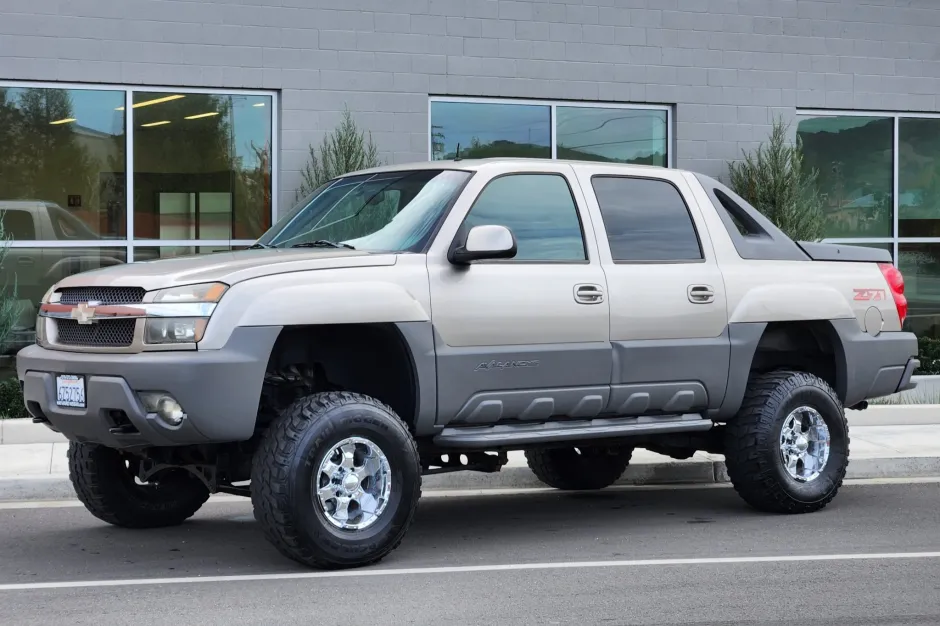
8. Chevrolet Avalanche
The Chevy Avalanche has always been an automotive oddball. It combined the functionality of a pickup with the comfort of an SUV, using GM’s full-size SUV platform and offering a unique midgate system that allowed the cabin to open into the bed. It was a clever idea, and it garnered a loyal, albeit small, following. But when it comes to DIY support, the Avalanche community is fragmented at best. Owners are scattered across Silverado forums, Tahoe forums, and a few Avalanche-specific pages that haven’t been active in years.
One of the challenges with Avalanche DIY support is the truck’s unique construction. The midgate system, cladding, bed cover mechanisms, and integrated storage bins all differ from standard GM trucks.
So while you can often find engine or transmission repair info in Silverado groups, when it comes to Avalanche-specific repairs—like fixing a stuck midgate or repairing water leaks caused by compromised cladding seals—information is scarce. The few guides that exist are often incomplete or tied to image hosting sites that no longer work, leaving readers guessing.
Another issue is its demographic. Avalanche owners skew toward those who want comfort, utility, and reliability—not customization or tinkering. While the truck is more than capable of being modified, very few owners bother. You’ll see far fewer lift kits, LED retrofits, or off-road builds compared to Silverados or Sierras.
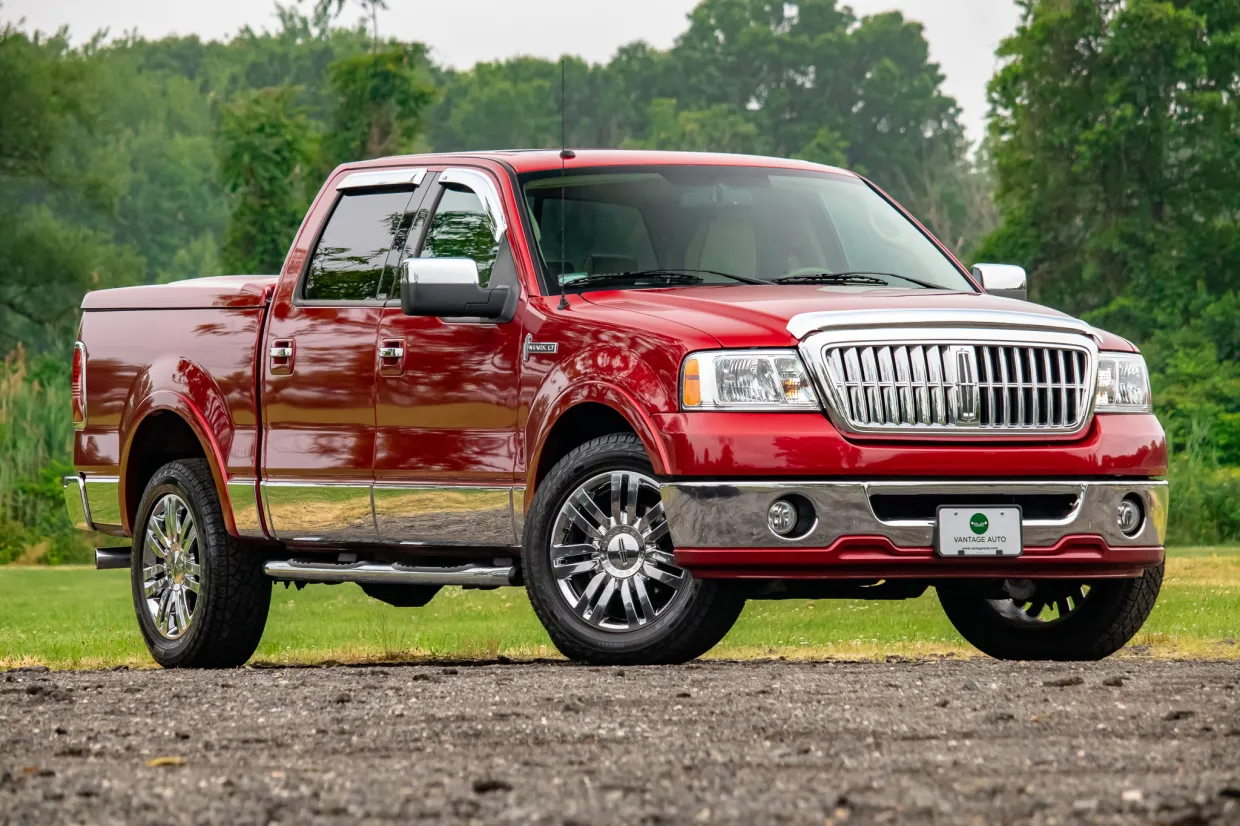
As a result, the modification knowledge base is practically nonexistent. You can find some performance discussions around the 5.3L or 6.0L engines, but that information tends to come from Camaro or Corvette forums, not from Avalanche-specific sources.
That said, there’s a strange affection for the Avalanche among its fans. Some forums remain nostalgic, filled with users reminiscing about their trucks’ versatility and ride quality.
Occasionally, a helpful user will post a long thread about fixing a specific Avalanche problem—like replacing the plastic sail panel clips that always break—but these are diamonds in a very rough terrain.
If you own an Avalanche and need community help beyond basic maintenance, expect to do a lot of cross-platform research and part matching. It’s a lovable truck, but its online support feels like an afterthought.
9. Lincoln Mark LT
The Lincoln Mark LT was meant to be a luxurious reinterpretation of the Ford F-150, but it never truly caught on. It was offered briefly from 2006 to 2008 in the U.S. and a bit longer in Mexico, which makes it an extremely niche vehicle.
DIY communities rely heavily on critical mass, and with such a small production run and even smaller enthusiast base, the Mark LT was doomed to online obscurity. Even within Lincoln circles, it’s barely acknowledged—and in Ford F-150 communities, it’s often dismissed as irrelevant.
Mechanically, the Mark LT is almost identical to the F-150 of its era. This should have been a huge advantage, but it hasn’t translated into DIY engagement. Most Mark LT owners treat their trucks as premium transport, not as projects. You won’t find threads about re-gearing, adding long-travel suspension, or even replacing stereo systems.
And while F-150 guides technically apply, there are enough luxury-specific systems—like chrome trim fitments, premium sound modules, and wood-trimmed center consoles—to make Mark LT work just annoying enough that it needs its own documentation.
Even common issues like instrument cluster failures or coil pack replacements, which plague F-150s and are well-covered on forums, are hard to trace back to the Mark LT by name.
If you search “Mark LT blend door actuator replacement,” you’ll often end up reading vague forum posts that redirect you to F-150 guides—ones that may not account for interior layout changes or wiring differences. This ambiguity causes confusion and frustration, particularly for new owners who aren’t sure where their truck fits in the Ford-Lincoln landscape.
Finally, the prestige angle of the Mark LT works against it. The truck’s original buyer base skewed toward those who wanted comfort and didn’t care about wrenching.
That culture trickled down into second-hand ownership, where DIYers are scarce and content creators rarely bother making videos or guides. If you own a Mark LT and want to modify or repair it yourself, you’re essentially working in the shadows, dependent on F-150 crumbs and a lot of trial and error.

10. Suzuki Equator
The Suzuki Equator is one of the most obscure trucks to ever enter the North American market. Sold between 2009 and 2012, it was essentially a rebadged Nissan Frontier with minor aesthetic differences.
On paper, this should have made it one of the best sleeper trucks for DIYers—benefiting from Frontier reliability and simplicity—but in reality, the Equator community is virtually nonexistent. A search for Equator-specific DIY content yields almost nothing of substance, making it feel invisible in the DIY universe.
This isn’t due to any fault of the truck itself. The Equator is mechanically sound, with the same 2.5L and 4.0L engine options as the Frontier, and it shares the same frame, suspension, and drivetrain.
But branding matters. Because it carries the Suzuki name—no longer a player in the U.S. car market—many Frontier owners ignore it entirely, and Equator owners often don’t realize they can rely on Frontier forums. The result? Two communities that could be one, split unnecessarily by bad badge marketing.
Even when Equator owners do find the right forums, they face another problem: the tendency for Frontier discussions to center around specific trims, generations, and accessories that don’t always match the Suzuki equivalents.
Confusion around wiring diagrams, option packages, or part compatibility leads to hesitation. Plus, with such a small user base, it’s rare to see two Equator owners discussing the same issue, let alone building a consensus on how to fix it.
Ironically, this might make the Equator a hidden gem for hardcore DIYers. If you’re the kind of person who loves figuring things out solo, documenting your own work, and helping fill a gap in the online knowledge base, the Equator offers a blank canvas. But make no mistake: it is a blank canvas.
There’s almost no one there to help, and you’ll be carving your own path from day one. For most owners, that’s more burden than opportunity.
Also Read: 5 Sedans With Best Throttle Response And 5 That Are Sluggish
When it comes to owning a truck, the value of a strong DIY community cannot be overstated. While power, durability, and payload capacity are all important qualities, they’re often overshadowed by one critical question: When something breaks, can you fix it yourself—or will you be forced to rely on a shop or dealership every time?
That’s where the real-world impact of online communities, support networks, and user-generated content comes into focus. Trucks with active DIY communities empower owners to take their vehicles into their own hands—literally.
The five trucks we’ve identified as having the most developed DIY ecosystems—the Toyota Tacoma, Ford F-150, Jeep Gladiator, Chevy Silverado, and Nissan Frontier—each exemplify a different facet of what makes a great DIY platform.
Whether it’s the Tacoma’s off-road culture and bulletproof reputation, the F-150’s sheer ubiquity and modular design, or the Silverado’s muscle-car engine lineage and practical simplicity, each one benefits from a culture that thrives on sharing, documentation, and modification. These trucks aren’t just machines—they’re collaborative projects, constantly improved upon by thousands of contributors across the internet.
These communities do more than just solve problems. They foster confidence. They demystify complex systems. They save owners money. They create friendships and networks of like-minded people who treat their vehicles as more than just transportation.
In many cases, they extend the life of a truck by years, all because someone took the time to post photos of a belt replacement or film a suspension install. This grassroots infrastructure of help and information has become a powerful counterbalance to dealership dependence, encouraging learning and self-reliance among owners of all experience levels.
On the other hand, the five trucks with minimal DIY presence—like the Honda Ridgeline, post-2000 Ram Dakota, Chevrolet Avalanche, Lincoln Mark LT, and Suzuki Equator—highlight how isolating truck ownership can feel without a strong community. In many cases, these trucks suffer not from mechanical failures but from digital abandonment.
Owners are left with questions that go unanswered, repairs that seem riskier without guidance, and a reliance on dealerships for even simple maintenance. This often leads to higher ownership costs, less personalization, and in some cases, reduced long-term satisfaction with the vehicle.
This isn’t to say these trucks are inherently bad. The Ridgeline, for example, is a fantastic light-duty truck for urban or suburban use. The Avalanche was clever and comfortable. The Mark LT offered a unique luxury truck experience, and the Equator, while rare, was mechanically sound.
But what these trucks lacked was an ecosystem—a village of fellow owners sharing insight, troubleshooting problems, and building confidence in each other. Without that network, even the best-designed truck becomes intimidating when the check engine light comes on.
As we move further into the digital age, this issue becomes more pronounced. More and more repairs involve computers, diagnostics, and firmware—areas where user documentation is essential. The future of DIY work won’t just involve wrenches and sockets; it’ll involve code readers, software patches, and nuanced guides tailored to increasingly complex systems. The vehicles that will thrive in that future are the ones backed by active, evolving communities willing to meet those challenges head-on.
So, what’s the takeaway? If you’re a prospective truck buyer who values mechanical independence, or if you just like the idea of being able to modify and maintain your truck without outsourcing everything, don’t just consider horsepower or cargo volume. Look at the forums.
Browse the YouTube tutorials. Scroll through Reddit threads. Choose a truck whose ownership experience includes you in the process. Because at the end of the day, the best truck isn’t the one that never breaks—it’s the one you’re not afraid to fix yourself.
